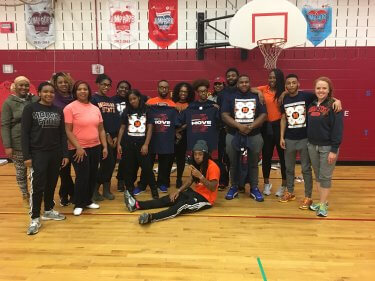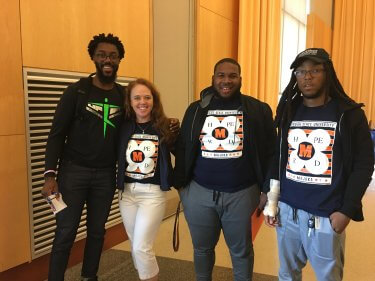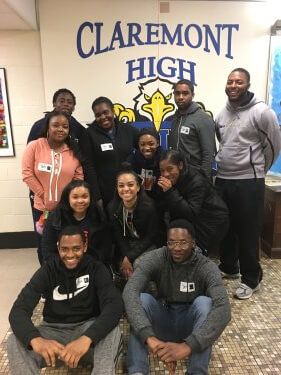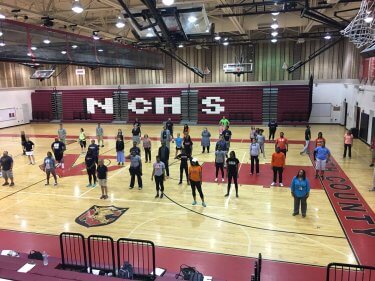“50 Million Strong by 2029 (50MS) is a vision – a world in which healthy choices and being physically active are the norm for America’s youth” (Jefferies, 2017). But ensuring that all 50 plus million children living in the United States regularly engage in physical activity will require change. Physical activity engagement can no longer be limited solely to those who have historically had the socio-economic or cultural privilege to participate.
To meet the 50 Million Strong goal, intentional efforts will be necessary to engage those that – for a myriad of reasons beyond the scope of this writing – have historically and culturally been excluded, or have self-selected exclusion from participating in physical activity for the purposes of enjoyment, socialization, and wellness. Truly meeting the goal of engaging 50 million young people in regular physical activity demands that attention be paid to both engagement strategies as well as reasons why people from under-represented groups all-too-often avoid engaging in physical activity.

Cultural fluency (CF) is an important consideration when addressing opportunities, concerns, and approaches to successfully engage individuals and groups who have historically and/or personally been unable or disinterested in participating in physical activity. CF is an on-going process of critical reflection focused on accurately interpreting intercultural interactions. These interactions may be between individuals, groups, interpretations of data, or place-making experiences. Importantly, progress in developing the habits of mind critical for cultural fluency requires humility in understanding that irrespective of the person’s cultural identity, there are a host of socially constructed privileges and oppressions that need to be recognized.
Four critical components to developing CF include examining primary identities, decoding, contextualizing, and code shifting. Many aspects of CF are derived from scholarship on the development of alpha-literacy: specifically reading, writing, and speaking. The foundational tenant of CF is that to be successfully on a CF journey individuals must know and be literate in their primary identities. Just as learning to read in a second language is far easier if a person is literate in their first language, it is easier to engage in novel cultural interactions if we first understand our own identities as well as the intersecting power and oppression of those identities.

Making 50 Million Strong a reality is going to take more than energetic role models and endless volumes of scholarship that explicitly proclaim the benefits of being active. As leaders of the movement, physical and health educators must go beyond the simplistic “if you build it, they will come” mentality. To illustrate this point: If access and opportunity were the only factors limiting participation in physical education everyone who lived near a lake, river, or the ocean would be a swimmer. We know that this is not the case. Similarly, we also know that while access matters to engagement in physical activity, it is only one part of the equation. As teachers, leaders, allies, and advocates working to ensure that all young people engage in regular physical activity, we must be able to decode and contextualize the historical and cultural factors that exist and result in limiting perceptions of who is and who is not allowed to participate in physical activity.
The lens of CF emphasizes that to engage all learners, we must engage in a practice of the 4R’s to support student success. We must recognize, reflect, rehearse and relate. Doing so will help us understand individuals as well as the historical, cultural, and institutional barriers to—and culturally responsive strategies for—engaging everyone in physical activity. The Twitter hashtag #How&WhatMatters serves as a reminder that to meet the needs of all students in a CF approach to diversity and inclusiveness, both what is taught and how that information is taught it is critical.

Not long ago during an #ESPEchat, physical educators offered several practical ideas on how to leverage CF to meet our 50MS goal. Some of what they offered included the following:
- examining taken-for-granted practices of “this is just what we do around here”
- intentionally teaching students about diversity, communication, agency development, cooperation, and character development
- implementing collaborative practices such as peer teaching or evaluation
- including music, dance, and games from around the world, especially representing the home language & culture of students
- establishing, teaching, and reinforcing classroom rituals and routines to support high expectations and a culture of collaborative learning
- ensuring each lesson is comprised of developmentally appropriate, differentiated, highly active learning experiences for every child
- engaging with families and communities.

Finally, one participant in the #ESPEchat also reminded us of the big idea that movement is part of all cultures, and that we as physical activity professionals in being reflective of our practices and aware of possibilities, can build on that big idea to support student engagement in life-enhancing physical activity that honors who they are as individuals in our collective movement community.
References
Jefferies, S.C. (2017). http://www.pheamerica.org/2017/what-50-million-strong-by-2029-is/). Retrieved 4/26/2017.
